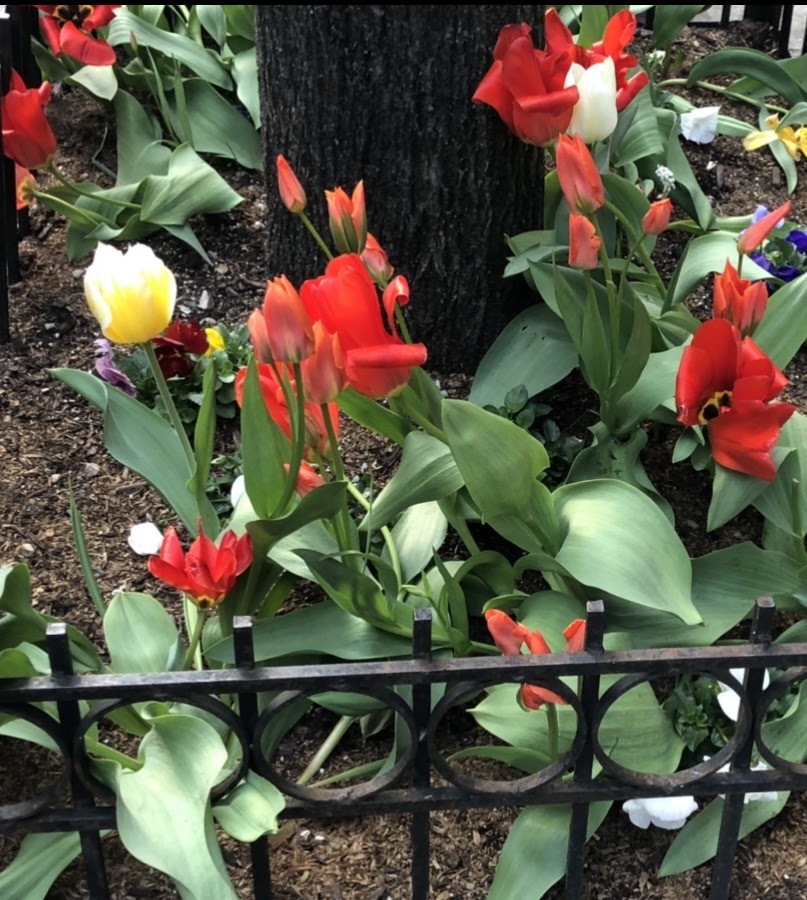Twenty Anthophiles, Fifteen Hours, And a Whole Lot of Flowers: Netflix’s ‘The Big Flower Fight’
Contestants in the Big Flower Fight made use of various types of flowers in the mammoth sculptures that they built during each round of the competition.
Oh, sugar honey iced tea! This show was something. Imagine twenty anthophiles (lovers of flowers), fifteen hours, and a whole lot of flowers. Viewers got all of this and more in Netflix’s new series The Big Flower Fight, where teams of amateur florists from around the world came together in Maidstone, England, to build colossal floral sculptures in the hopes of getting to show off their wicked floral skills in the Royal Botanical Gardens in Kew.
At the beginning of the competition, there were ten teams. There were two contestants per team, summing up to twenty participants in The Big Flower Fight. The fight consisted of eight challenges, with each subsequent challenge being more complex than the preceding one. Every challenge tested the contestants’ flower-arrangement skills, their creativity, and their patience. At the end of each challenge, Kristen Griffith-VanderYacht, one of the world’s top florists, would review each team’s sculpture with a guest judge, crowning the winning team “Best in Bloom.” The title was commemorated with a large flower pin.
Throughout the series, the contestants brought the show to life with their humor, rivalries, and competition. Competition was especially fierce, and some contestants did not shy away from playing dirty. Many teams would take all of one type of flower, leaving none of that flower for another team who may have deemed it essential for their sculpture. The rivalries were not toxic, however, and I found myself enjoying the friendly competition the most. Indeed, one of my favorite aspects of the show was the rivalry between Yan and Henck, florists who have been in the floral game for over 20 years, and Ryan and Andrew, artists who entered the competition with the least amount of experience. Although they started off with the least amount of experience, Ryan and Andrew still stunned both the judges and the other competitors with all their floral sculptures.
Though the contestants did have their eyes on the prize for the entirety of the competition, nobody hesitated to help out and offer advice when another team needed assistance. Whether it was offering a crash course on willow weaving or lending a hand to finish a sculpture in time, the contestants did not hesitate to help their competition. It was refreshing to see such cooperation and sportsmanship. Many students at Bronx Science agree. “I loved how everyone got together and helped each other out. It was amazing to see how everyone dropped what they were doing to help Andi and Helen when their sculpture was falling apart,” said Logan Klinger ‘21.
Another aspect of the show that I enjoyed was its discussion of social issues. The show uses its platform to shine a light on environmental sustainability. Not only did the contestants often make living floral sculptures, but many challenges also required them to reuse waste in their floral masterpieces. For example, during the quarterfinals, contestants repurposed plastic waste into their floral sculptures of sea creatures. In another episode, the show provided the opportunity for one team to discuss mental health. For a challenge where they had to create giants that appeared to burst from the ground, father-son duo Ralph and Jim chose to represent Jim’s anxiety through an anxiety monster and spent the challenge building a floral sculpture that depicted anxiety.
The show did not, however, come without flaws. Patience is required both to partake in the flower sculpturing and to watch the participants do their thing. Though episodes are approximately 40 minutes, the competitors take part in challenges that are hours long, and it can take a bit of time for viewers to actually see what a participant’s finished product will look like. While this does make the final showing of all the contestants’ hard work more breathtaking, the show can seem to drag on when the participants still have a long way to go.
Overall, I strongly recommend giving The Big Flower Fight a view. By the end of it all, you will want to test if you, too, have a green thumb and can make an eight foot tall floral orangutan sculpture that warns against climate change. And, most importantly, you’ll have fallen in love with the contestants and their eccentric ways.
To watch Netflix’s The Big Flower Fight (subscription required), click HERE.
“I loved how everyone got together and helped each other out. It was amazing to see how everyone dropped what they were doing to help Andi and Helen when their sculpture was falling apart,” said Logan Klinger ‘21.
Jamie Lee Nicolas is an Editor-in-Chief of the ‘The Science Survey.' Jamie enjoys journalistic writing because it allows her to express her opinions...











